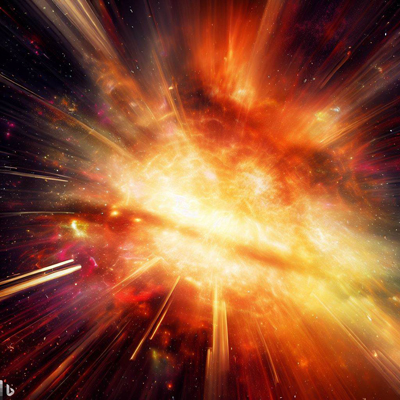Was Light the First Physical Creation in our Universe?
Light may be considered the first physical manifestation when the Big Bang occurred. One theory postulates that the unbelievable bright light created by the Big Bang created the first physicality as a result of muons colliding with photons. When these collisions occurred over and over again the muons absorbed the photons making the muons larger and larger. Thus, this may be the first physical creation in the universe.
Light then is primary substance and the most important element in our universe.
What is Light:
Light is an electromagnetic radiation that travels in waves and is characterized by its wavelength, frequency, and energy.
The Basic Elements of Light are:
Electromagnetic Waves:
Light is a form of electromagnetic radiation, which means it is made up of oscillating electric and magnetic fields that travel through space.
Photons:
Light is composed of tiny packets of energy called photons, which have both wave-like and particle-like properties.
Wavelength:
The wavelength of light determines its color and is the distance between two consecutive peaks or troughs in a wave. The visible spectrum of light ranges from violet (shortest wavelength) to red (longest wavelength).
Frequency:
The frequency of light refers to the number of waves that pass a given point per unit time and is related to the energy of the light. Higher frequency light has more energy than lower frequency light.
Polarization:
Light waves can be polarized, meaning that the oscillations of the electric and magnetic fields are aligned in a particular direction.
Intensity:
The intensity of light is the amount of energy per unit time that is carried by the electromagnetic wave and is related to the amplitude of the wave.
Muons:
Muons are subatomic particles that belong to a group of particles called leptons, which also includes electrons and neutrinos. Muons can be produced naturally in cosmic ray showers or artificially in particle accelerators.
When muons are produced, they also emit light in the form of Cherenkov radiation, which is caused by the charged particles traveling faster than the speed of light in a medium.
In terms of their interaction with light, muons can scatter and absorb photons through electromagnetic interactions. This can result in phenomena such as energy loss, ionization, and fluorescence.
Muons also have a property called spin, which can interact with magnetic fields and cause them to precess (the slow and continuous change in rotation). This effect is used in some experiments to measure the magnetic properties of materials or to study the behavior of subatomic particles.
Hits: 46
